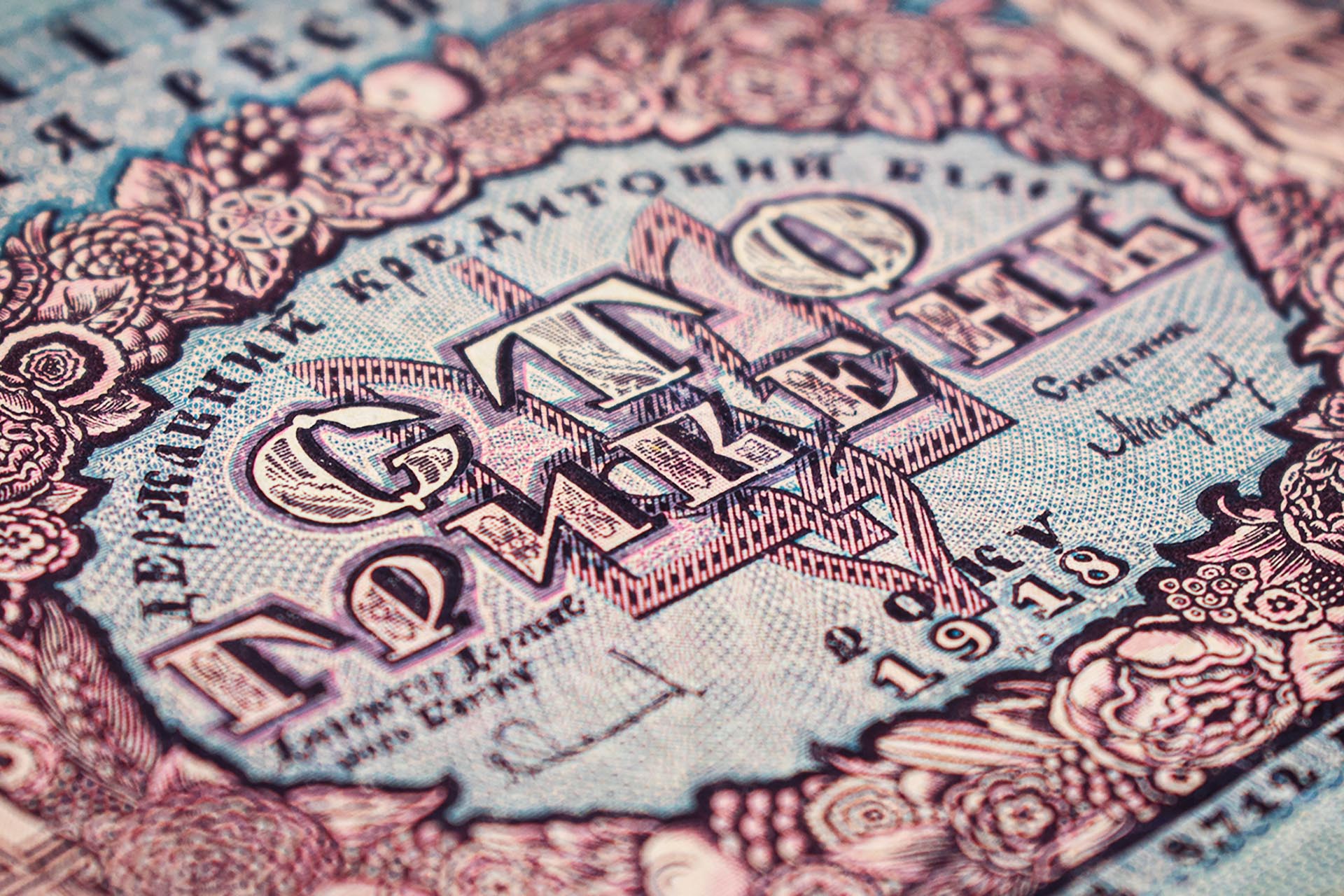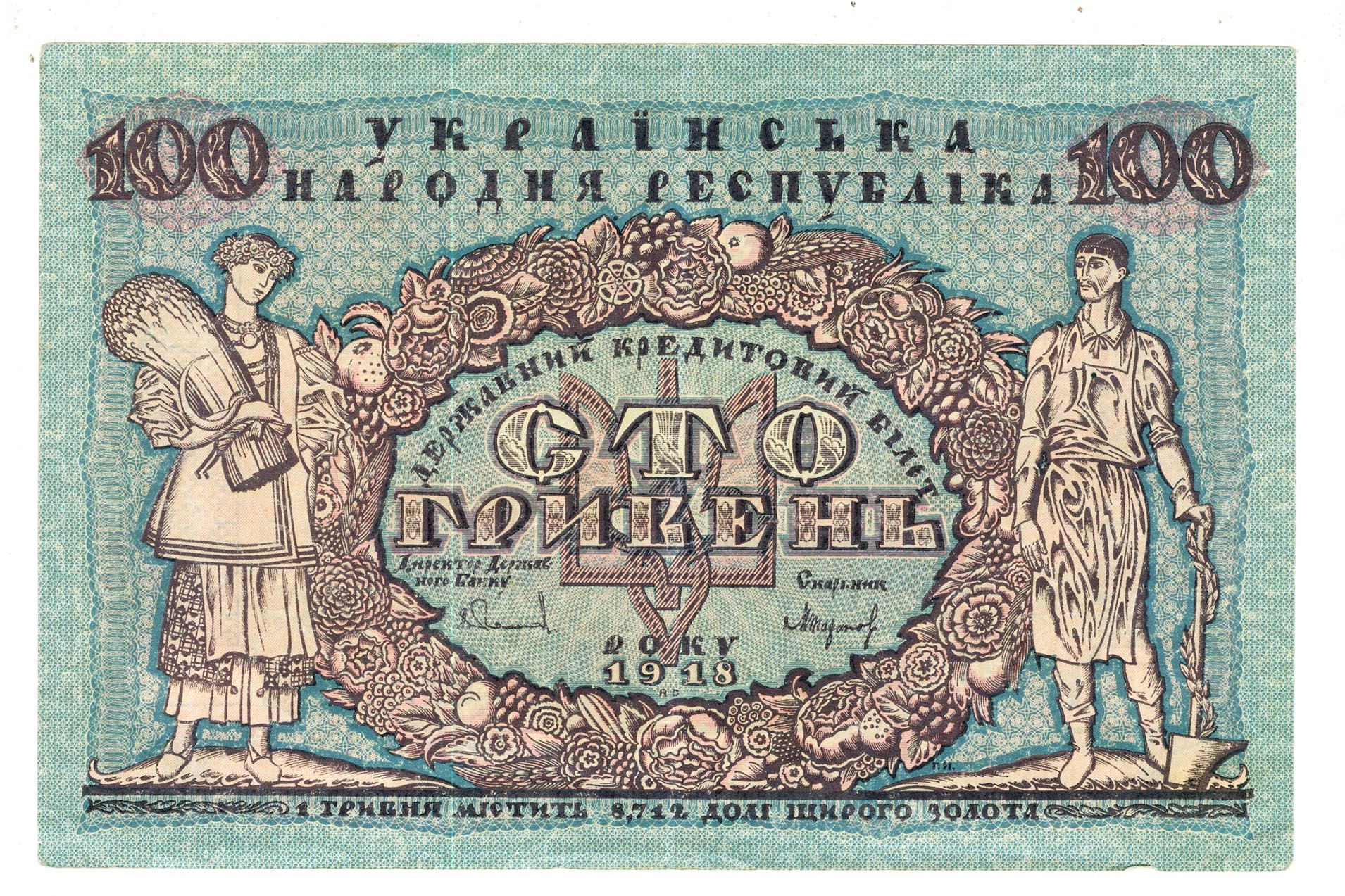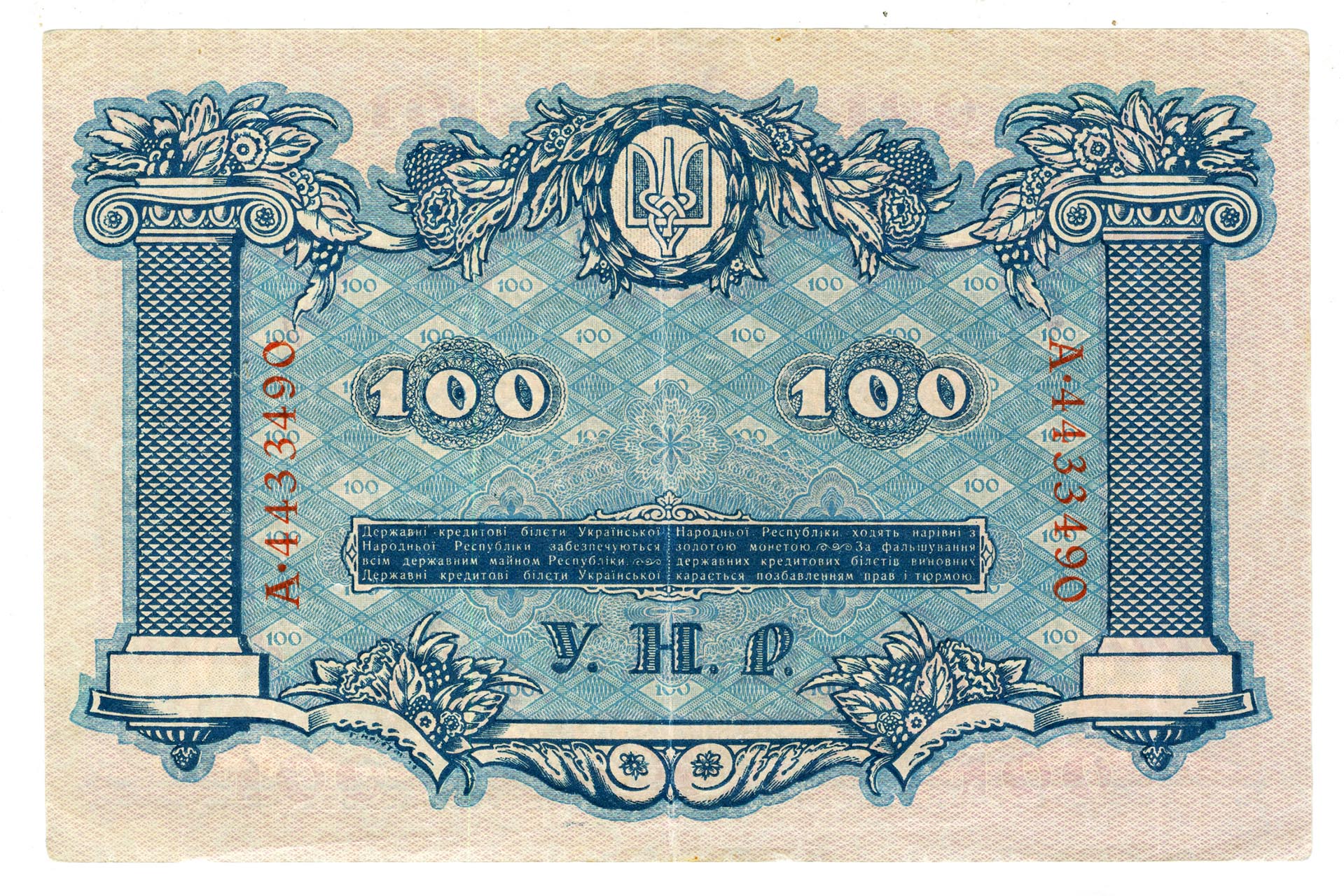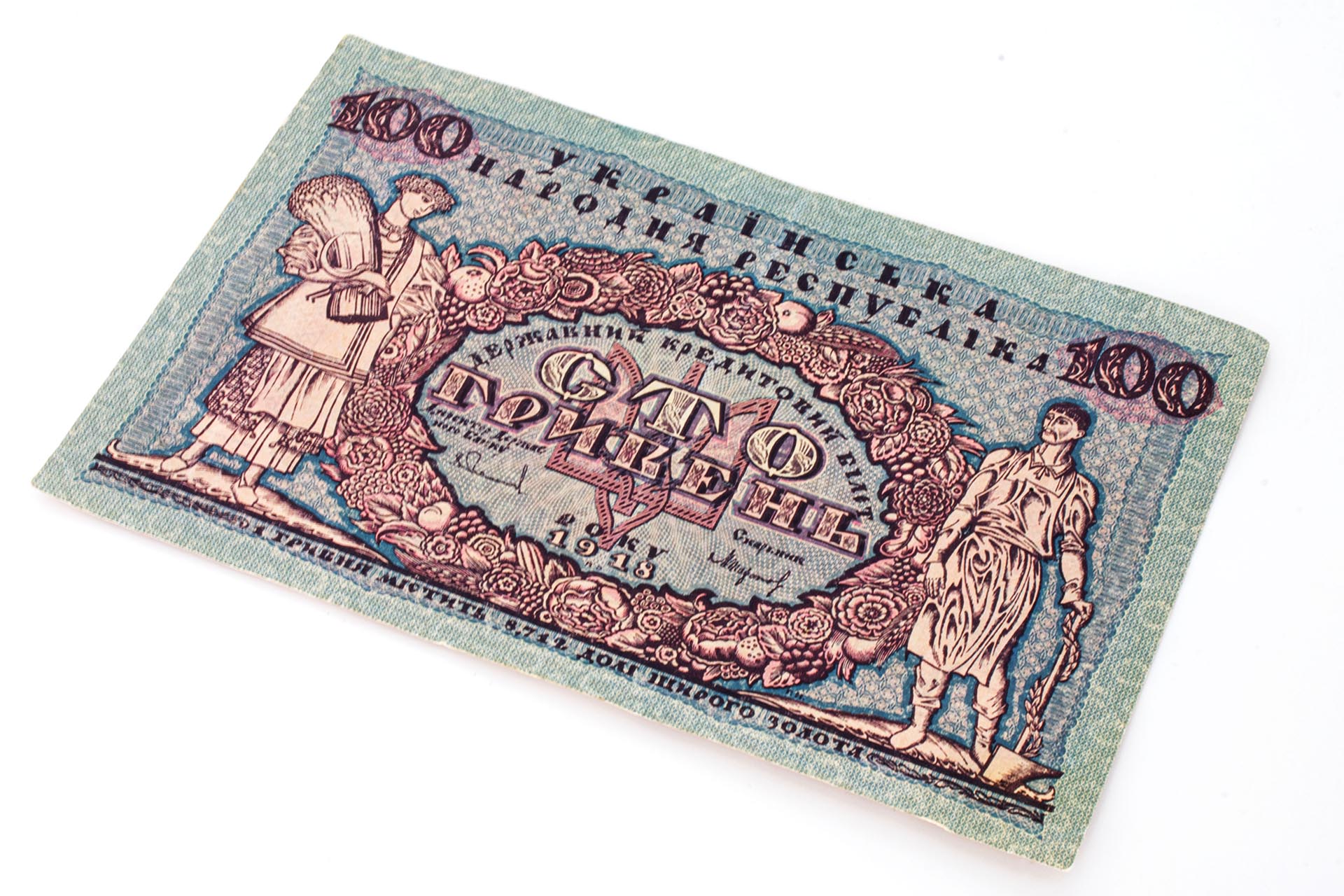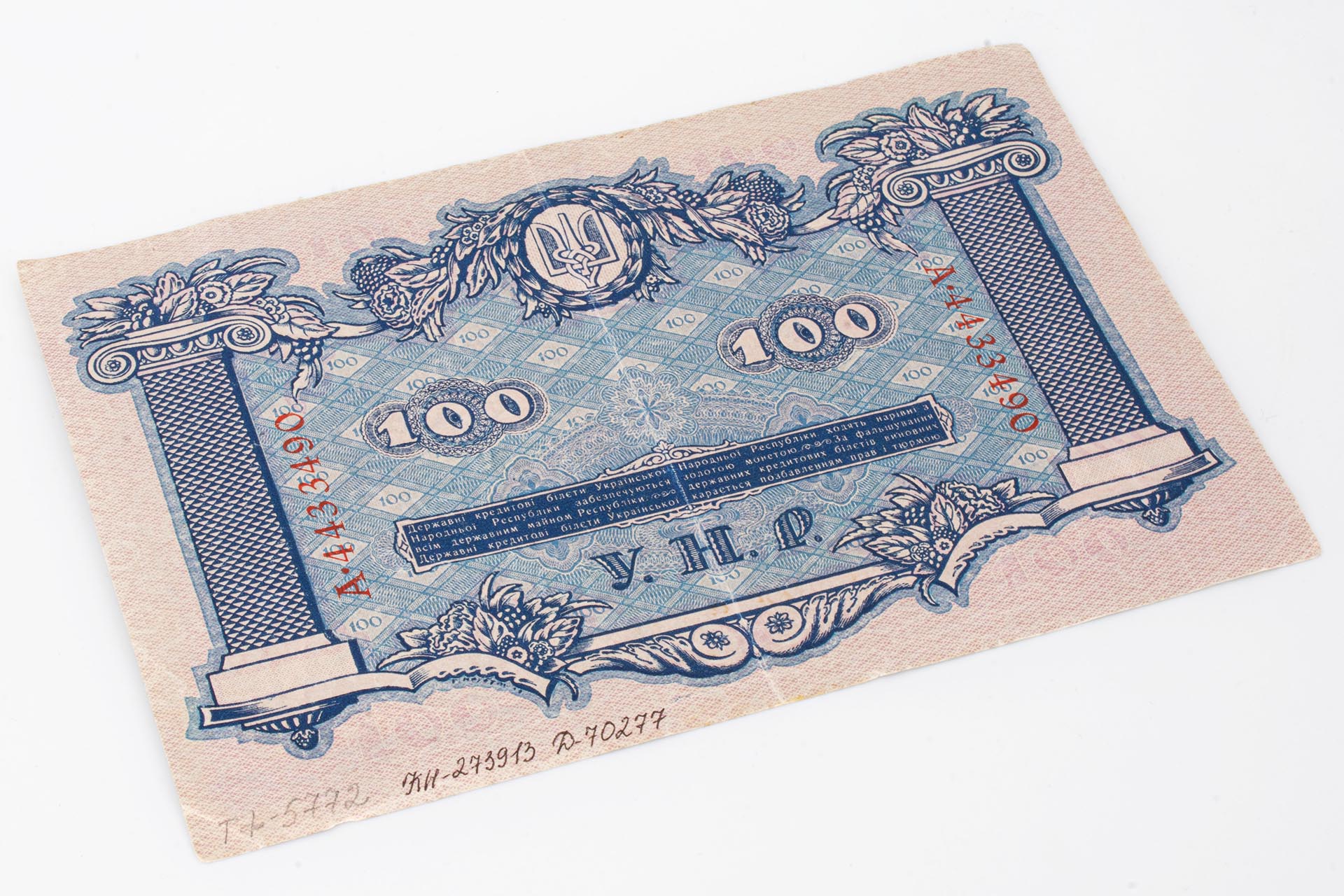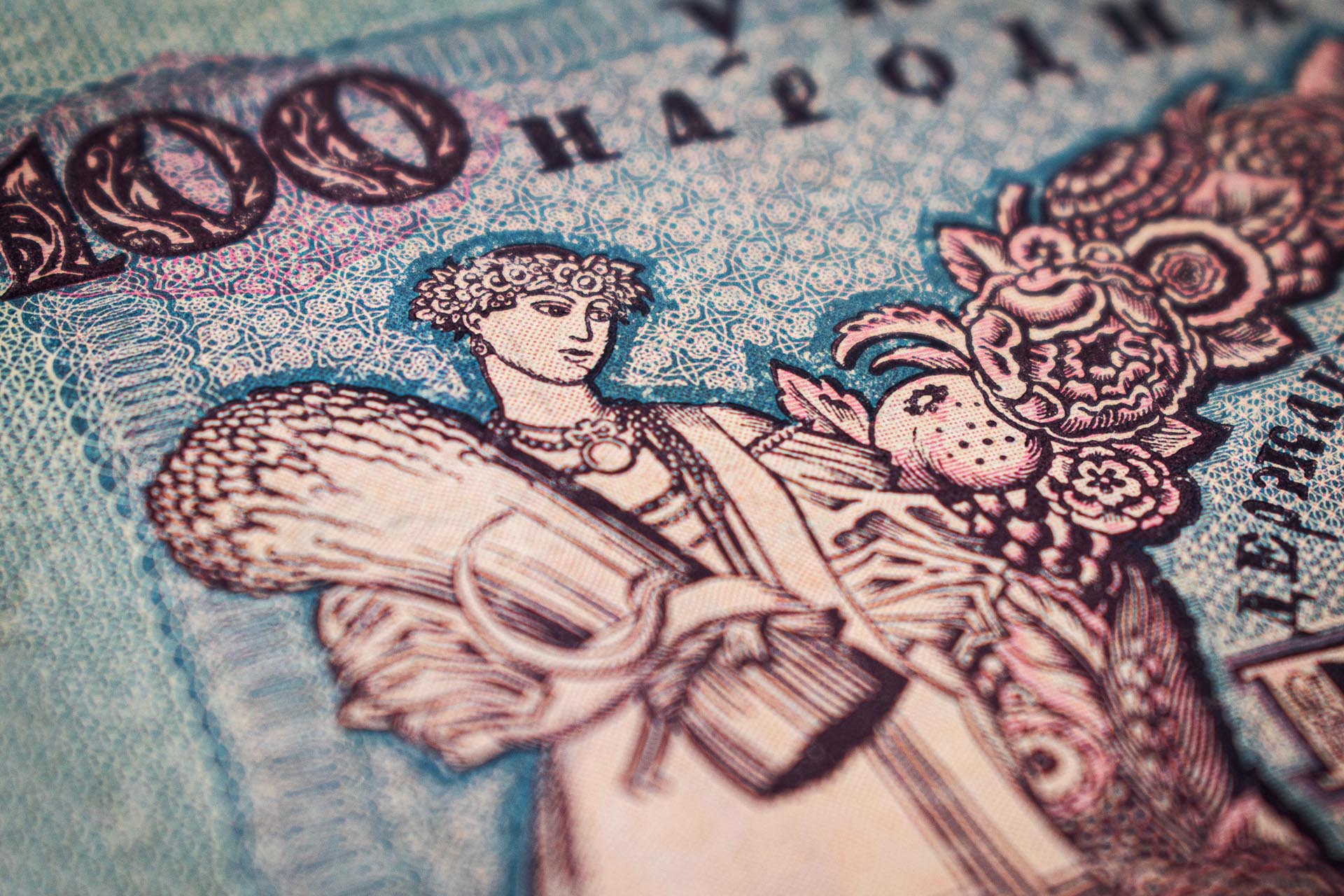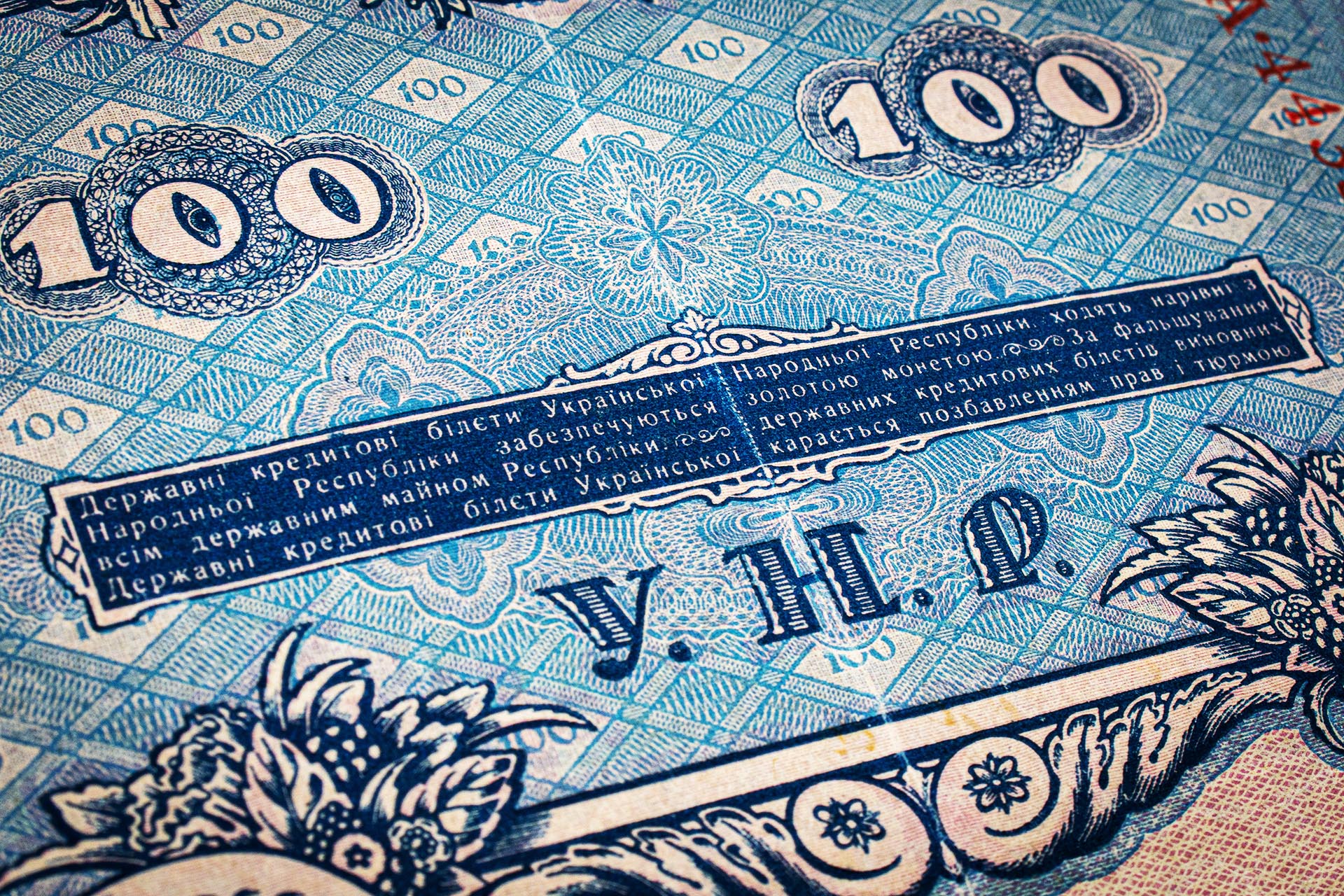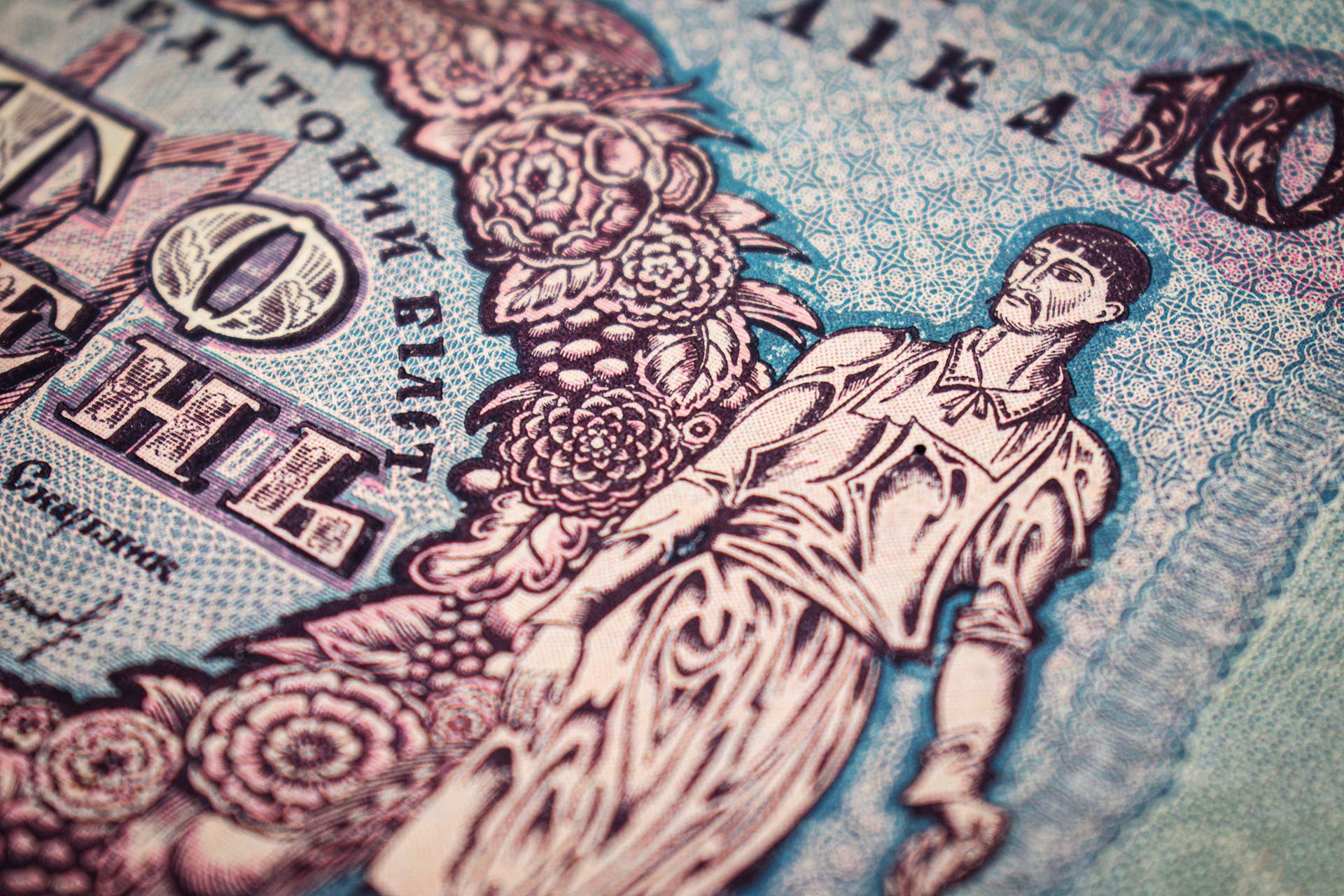On March 1, 1918, the Central Rada adopted a law on the introduction of a new monetary unit - hryvnia, which was divided into 100 shags and contained 8.712 dolias of “pure gold” (at that time, 1 share equalled 0.044 g, so 1 hryvnia corresponded to 0.383 g). Another law dated March 30, 1918 regulated the issue of State Treasury tokens in karbovanets, which could be exchanged for hryvnias in the ratio of 1(krb):2(hryvnias). The production of money was taken care of by the General Secretariat of Finance/Ministry of Finance, where in March 1918 an art and engraving department was organized, which was headed by Ivan Mozalevskyi from its foundation until June 1919. The first denominations of 2 (author Vasyl Krychevskyi), 10, 100 (introduced into use on 17.10.1918) and 500 (author Heorhii Narbut) UAH, ordered by the Central Rada, along with banknotes of 1000 and 2000 (author Ivan Mozalevskyi) UAH have arrived already in circulation in the Ukrainian State of Pavlo Skoropadskyi. They were printed in Berlin (Germany). It is noteworthy that when creating money, each of the artists interpreted in his own way the image of the Sign of Volodymyr the Holy – Trident, so it has a different graphic presentation.
By the way, the banknotes authored by Narbut had extremely exquisite artistic design. In the sketch of the 10-hryvnia bill on the front side, the graphic artist used a frame from a well-known engraving of the 17th century. “Plan of Kyiv” by Afanasii Kalnofoiskyi; all texts are made from the best samples of Ukrainian old prints - specialists believe that the font is taken from the Peresopnytsia Gospel - the 16th century manuscript; on the back - excerpts from the law of the Ukrainian People’s Republic, a wide ornamented frame and the original number “10”, composed of flowers and leaves. In turn, the 100-hryvnia note is first of all impressive with a wreath made of typically Ukrainian flowers and fruits; on both sides of the wreath - a peasant woman, whose face resembles Lesia Ukrainka and embodies the peasantry, and a man “with the face” of Hryhorii Skovoroda - a symbol of the working class. The bill is considered the best in the series of Narbut’s money.
In addition to the above-mentioned artists, the following worked on the creation of the national monetary system during the First Liberation Struggle in 1917–1921: Hryhorii Zolotov - the author of 10 and 1,000 krb; Oleksandr Krasovskyi - 25, 50 krb; Antin Sereda – 10, 20 shah stamps; Antin Prykhodko - 250 krb.
On thick paper with watermarks (crosses/stars), rectangular shape, in the blue range characteristic of series A with the addition of black, white and pale pink colours.
Obverse with a decorative frame and the inscription below “1 hryvnia contains 8.712 parts of pure gold” ( the nominal capacity of the banknote is 38.3328 grams of gold). At the top it contains: on the left and right sides - the indication of the denomination “100”, between them - the inscription in two lines “Ukrainian People’s Republic”, which had banknotes 2 to 500 UAH (instead, 1000 and 2000 UAH were marked with the inscription “Ukrainian State”). In the centre there are a wreath of flowers, leaves, berries and fruits; on both sides of it on the left and right sides, respectively - a girl in national dress, with a flowered head, a sickle and a sheaf of wheat in her left hand, opposite - a man in a vytinanka, a work apron, standing, leaning on hammer; inside the wreath are the inscriptions “state credit note” (half-open), “One Hundred Hryvnias”, placed on top of the trident, “Year 1918”, indication of positions and facsimiles of the director of the Ukrainian State Bank Volodymyr Ihnatovych and treasurer M. Taranov, two letters in Latin RD (printer’s mark); at the bottom right under the wreath are the miniature letters H.N. (Heorhii Narbut). The background is a fine grid and a white geometric pattern.
The reverse is represented by an extremely refined frame, which is formed on the sides by two identical columns with Ionic capitals, crowned with flowers, leaves and fruits. From above, these "bouquets", combined with each other, form a kind of garland with a wreath-medallion in form of a trident. A floral composition completes the frame from below. Inside, the series and number of the banknote are overprinted in red on the left and right sides, and the denomination “100” is indicated on the background of three decorative round rosettes, on the rectangular shield is an extract from the law of the Central Rada dated March 1, 1918 on state credit notes, the abbreviation “U. N.R.”. Almost the entire field of the reverse is covered with denominations of “100” in various versions.
The project of the banknote, made by Heorhii Narbut in the spring of 1918, embodies Mykhailo Hrushevskyi’s idea of shield-bearers in the future Ukrainian coat of arms, expressed in his article of 1917: “...Instead of other figures, I’d be glad to see the symbols of the working-class people, e.g. a woman with a sickle on one side and a worker with a hammer on the other. In general, I’d like to see the attributes of our coat of arms as the most emphasized, cultural, creative, unifying character of our new republic”.
The total amount of banknotes is 427 million 989 thousand 300 UAH.
